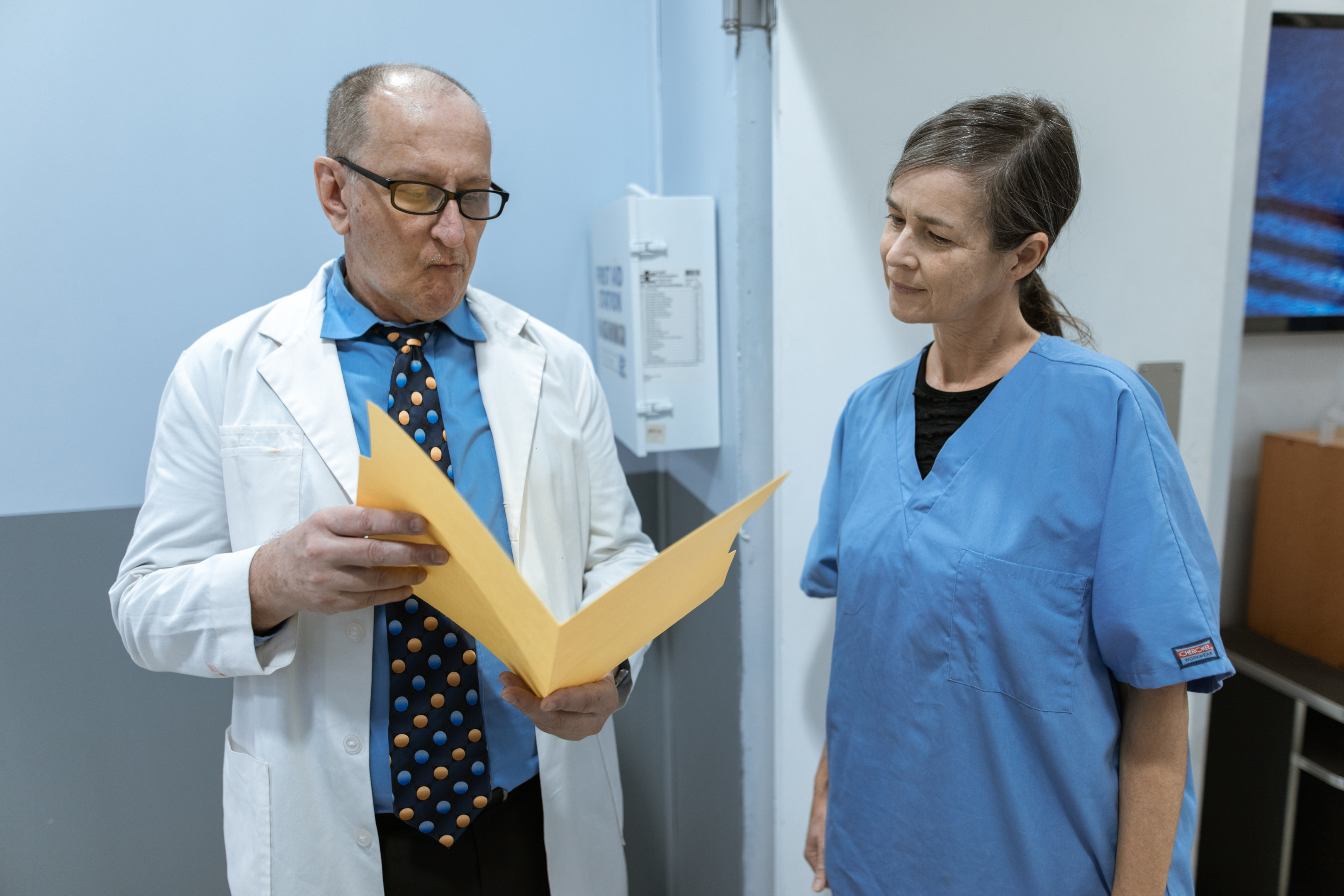Is It Normal to Have Bumps Inside the Vagina?


Finding lumps or bumps on your body is typically a cause for anxiety, particularly in the genital area. It is a good idea to examine the vaginal area frequently so you can see anything out of the norm soon. This might include unwanted additions like rashes, bumps, pimples, lumps, rashes, or everything in between.
Vaginal pimples frequently occur around the female genitalia or the vulva. However, not all genital lumps and bumps are vaginal pimples. Many different diseases, both viral and non-infectious, might be confused for vaginal pimples.
The appearance of bumps on the vagina might vary depending on the reason. This article discusses the most frequent causes of vaginal bumps or other vaginal areas, when to see a doctor, and how to treat them.

Several other diseases may develop bumps and lumps around the genitals that look like pimples. They are not always painful, but that does not imply you shouldn't take them seriously.
In other circumstances, pimple-like bumps are caused by illnesses that, if left untreated, might spread to other individuals. They may also be symptoms of another disease that needs medical attention.
There are many types of vaginal cysts, some of which contain pus and others which contain an air-tissue or a scar. Vaginal cysts might resemble pocket-like protrusions along the vaginal opening. While some cysts are painful and huge, most are tiny and generally have no symptoms. The following are some types of vaginal cysts:
Gartner’s Duct Cysts
Endometriosis Cysts
Bartholin’s Cysts
Vaginal Inclusion Cysts
Certain STIs may cause itchy pimples on the vaginal outer lips. Crab bites (pubic lice) generally appear on the vulva as little blue spots that itch continuously. Some STIs may include:
Genital warts are white or skin-coloured bumps that grow around the anus and the vulva. They are caused by one of two kinds of HPV viruses. Genital warts may be itchy or irritating, but they seldom cause pain. The virus that causes these genital warts is generally effectively fought off by your immune system.
Molluscum contagiosum is a very frequent yet relatively unknown STI. It is fairly common among sexually active young women, particularly those in their twenties. It also appears as splatters of small pimples all over the vulva and is infectious. However, these vaginal bumps usually fade away on their own.
Genital herpes affects one out of every six persons aged 14 to 49. Herpes may develop bumps and blisters, but the discomfort is what draws someone with herpes to the doctor. The blisters, which frequently resemble little pimples on a red base, may be exceedingly painful.
The "syphilis sore," which appears as a tiny chancre sore around the anus or vulva, is one of the signs of syphilis. It's spherical, painless, firm, and there's generally just one of them. It may also occur in inconspicuous areas, such as the rectum or vagina, making it difficult to find.
Skin tags are tiny flaps of excess skin that protrude from the skin. They are harmless until they brush or catch on something and get inflamed. If vaginal skin tags bother you, your doctor may remove them with a laser or surgically.
Ingrown hairs are often caused by waxing, plucking, and shaving pubic hair. When pubic hair follicles bend downward, the tip of the hair curls into the skin, resulting in ingrown hair. This causes a foreign body response, which includes inflammation, painful pustules and papules, and hyperpigmentation (skin darkening).
Aside from how you style your hair, several hereditary factors may expose you to the disease. Ingrown hairs are more common in those with tight curls or thick hair.
The first thing you should do if you have ingrown hair is stop shaving. This usually resolves the irritation within a few days.
You should see a dermatologist, gynaecologist, or doctor if it doesn't. They may prescribe an oral or topical antibiotic to relieve inflammation and prevent diseases.
Recurrent ingrown hairs may become long-lasting or chronic and progress to folliculitis, an infection of the hair follicles. The symptoms are often identical to other pimples and are treated accordingly. Tight clothes or perspiration discomfort may also induce folliculitis.

Vulvar cancer is very uncommon and much more unlikely to arise. Vaginal cancer symptoms may include raised or flat sores or bumps.
Cancer of the vulva has been discovered to be more common in older women and smokers. Additionally, having the HPV virus increases your risk of developing this malignancy. Only by extracting samples from worrisome lesions and examining them under a microscope can vulvar and vaginal malignancies be identified.

If you are anxious about changes in your body, you should see a doctor. If you see a new lump that does not go away after a few weeks, you should seek medical attention, as well as if you experience discomfort or symptoms of infection, including:
Sexually transmitted infection symptoms
Pus or blood-filled discharge from the lump
Vaginal lumps frequently don’t need treatment. If they do require medical attention or care, therapy is will depend on the cause of the lumps after a diagnosis has been made.
You may handle most vaginal lumps and bumps at home. Here are some things you may take to ease symptoms:
Wear undies made of natural materials, such as cotton. Natural fabrics breathe well and may keep the genitals cool and dry.
Wear apparel that does not irritate or chafe the vulva.
Take warm baths many times a day for a few days if you suffer from cysts, or see a gynaecologist. They may drain it for you and, if necessary, prescribe antibiotics.
Several sexually transmitted diseases (STDs) can cause symptoms that resemble pimples on the vagina, but two of the most common are herpes and genital warts. Herpes, caused by the herpes simplex virus (HSV), can lead to painful blisters or sores that might be mistaken for pimples. Genital warts, caused by certain strains of the human papillomavirus (HPV), can also appear as small bumps on the genital area. While these warts are often described as cauliflower-like in appearance, smaller warts may resemble pimples. It's important to note that not all bumps or pimple-like lesions in the genital area are due to STDs; they can also be caused by ingrown hairs, cysts, or other skin conditions. A healthcare professional can provide a diagnosis and appropriate treatment.
Growth in the private parts can be caused by a variety of factors, including STDs, non-STD infections, and benign or malignant tumors. Common causes include:
In addition to these, there are several non-infectious conditions that can cause lumps, bumps, or growths in the genital area. It's essential to seek evaluation by a healthcare provider for an accurate diagnosis and appropriate management, as treatment varies depending on the cause.
It's unlikely that bumps on your cervix are a reason for concern. Most will resolve themselves independently or may be treated or controlled at home. Suppose you have a common sexually transmitted infection, such as genital warts. In that case, it is typically treatable, but starting treatment as soon as possible is crucial to lowering your risk of consequences.
If you're uncomfortable with the lump on your vaginal area, don't tell yourself that it's probably harmless. If treatment is required, a doctor can advise you on your choices. And, physicians will gladly check you out and set your mind at ease, even if it's not a significant concern.
To learn more about sexual infections or order a private at-home blood test, read through our Sexual Health Page here.
Plus get the inside scoop on our latest content and updates in our monthly newsletter.